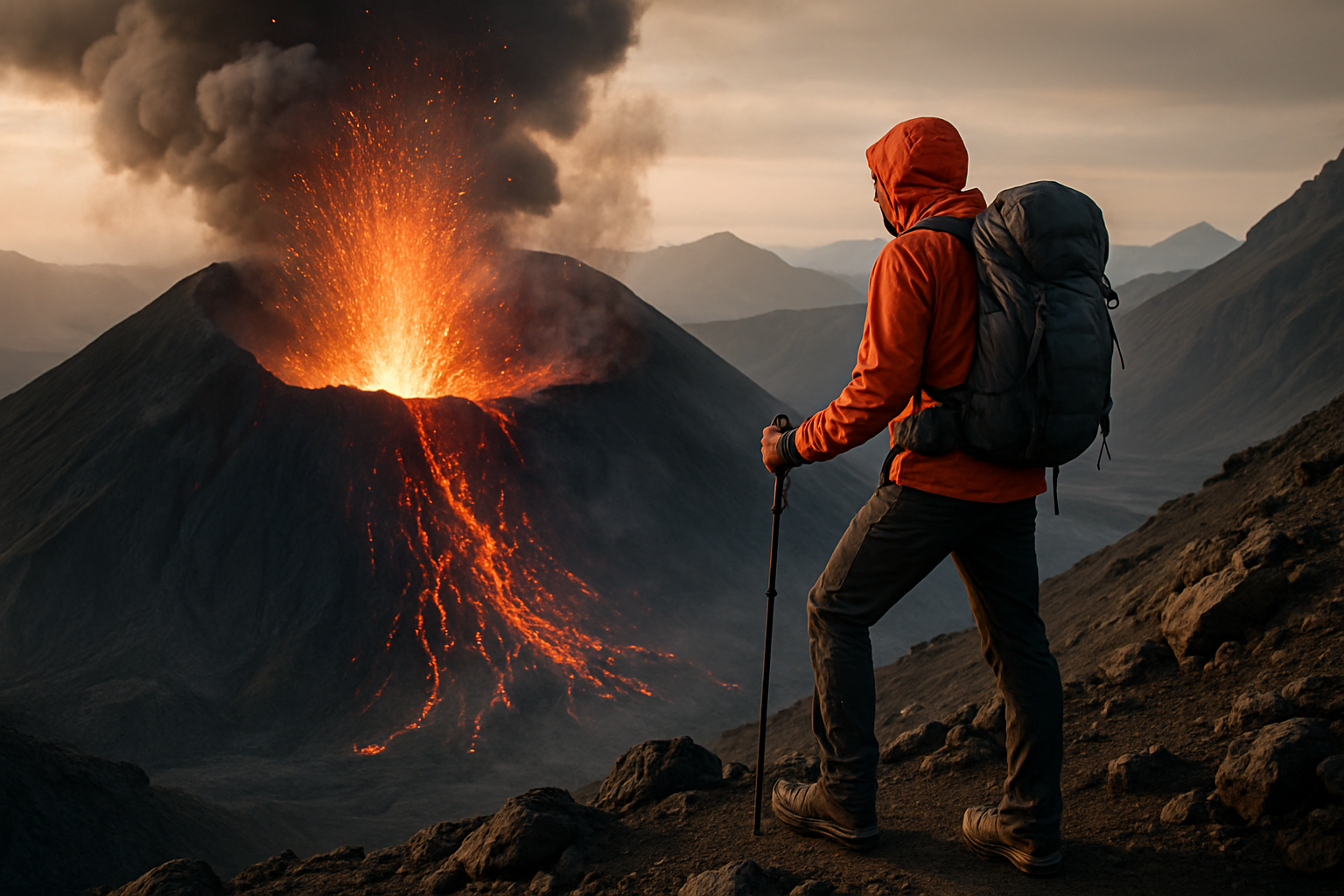Volcano-Hopping: The Explosive New Trend in Adventure Travel
Embark on a journey that ignites the senses and fuels the spirit of adventure. Volcano-hopping, the latest craze in thrill-seeking tourism, offers intrepid travelers a chance to witness Earth's raw power up close. From scaling dormant giants to observing active lava flows, this emerging trend combines geology, culture, and adrenaline in a truly unique travel experience. Discover why more adventurers are trading beach loungers for volcanic craters and how this fiery pursuit is reshaping the landscape of extreme tourism.

The appeal lies in the multi-faceted nature of the experience. Volcanoes offer a unique blend of natural beauty, scientific intrigue, and cultural significance. They are windows into the Earth’s inner workings, showcasing the planet’s dynamic forces in real-time. For many, the allure of standing on the edge of a smoldering crater or witnessing a fresh lava flow is irresistible, providing a visceral connection to the raw power of nature.
Destinations That Spark Interest
While volcanoes exist worldwide, certain destinations have become hotspots for volcano tourism. Iceland, with its otherworldly landscapes and accessible volcanic sites, has seen a significant influx of volcano-hoppers. The country’s Fagradalsfjall volcano, which began erupting in 2021, quickly became a must-see attraction, drawing thousands of visitors eager to witness the spectacle of molten lava.
Hawaii, long known for its volcanic activity, continues to be a prime destination. The Big Island’s Kilauea, one of the world’s most active volcanoes, offers visitors the chance to see ongoing eruptions and explore vast lava fields. In Central America, Nicaragua’s Cerro Negro has gained fame for volcano boarding, where thrill-seekers slide down the ash-covered slopes on wooden boards.
Indonesia, part of the Pacific Ring of Fire, boasts numerous volcanic sites. Mount Bromo in East Java, with its iconic crater and surrounding Sea of Sand, provides a surreal backdrop for sunrise treks. Meanwhile, Italy’s Mount Etna and Mount Vesuvius offer a blend of historical significance and geological wonder, attracting those interested in both ancient civilizations and natural phenomena.
The Science Behind the Spectacle
Volcano-hopping isn’t just about adrenaline; it’s also an educational experience. Many tour operators now include geological experts who provide in-depth explanations of volcanic processes, types of eruptions, and the impact on surrounding ecosystems. This scientific aspect adds a layer of depth to the adventure, appealing to curious travelers who want to understand the forces shaping our planet.
Volcanologists are finding that this increased interest in their field is helping to raise awareness about the importance of volcanic research and monitoring. Some volcanic observatories now offer public tours, allowing visitors to see firsthand how scientists study and predict eruptions. This intersection of tourism and science is fostering a greater appreciation for Earth sciences among the general public.
Challenges and Considerations
While volcano-hopping offers unparalleled experiences, it comes with significant challenges and risks. Active volcanoes are inherently unpredictable, and conditions can change rapidly. Tour operators and local authorities must constantly monitor volcanic activity and be prepared to alter itineraries or evacuate areas at short notice.
Safety is paramount in volcano tourism. Visitors must be properly equipped and guided, as the terrain can be treacherous and the environments often harsh. Exposure to toxic gases, unstable ground, and extreme temperatures are just some of the hazards that need to be carefully managed.
There’s also the question of environmental impact. As volcano-hopping grows in popularity, there are concerns about the strain on fragile ecosystems and local communities. Sustainable practices are becoming increasingly important, with some tour operators implementing measures to minimize their footprint and contribute to local conservation efforts.
The Future of Fiery Adventures
As technology advances, so too does the volcano-hopping experience. Virtual reality and augmented reality are being incorporated into visitor centers, allowing tourists to experience simulations of eruptions or explore inaccessible areas of volcanoes. Drone technology is enabling closer observation of active craters, providing stunning footage and valuable data without putting humans at risk.
The trend is also expanding beyond traditional volcano sites. Submarine volcanoes, long hidden from view, are becoming new frontiers for adventurous travelers. Specialized tours now offer the chance to dive near underwater volcanic vents, observing unique ecosystems that thrive in these extreme environments.
Igniting Your Volcano-Hopping Adventure
-
Always choose reputable tour operators with experienced guides and strong safety records
-
Check volcanic activity reports and weather conditions before planning your trip
-
Invest in proper gear, including sturdy hiking boots and protective eyewear
-
Respect local customs and beliefs surrounding volcanic sites, which are often considered sacred
-
Consider visiting during shoulder seasons to avoid crowds and get a more intimate experience
-
Learn basic geology before your trip to enhance your understanding and appreciation
Volcano-hopping represents a bold new frontier in adventure travel, offering a unique blend of excitement, education, and natural wonder. As more travelers seek out these fiery destinations, the industry continues to evolve, balancing the thrill of exploration with safety and sustainability. Whether you’re a seasoned adventurer or a curious novice, the world of volcanoes beckons, promising unforgettable experiences that will leave you with a deeper connection to the planet’s most powerful forces.





